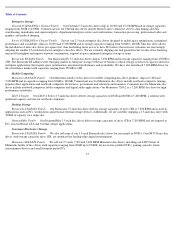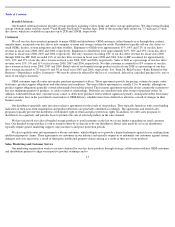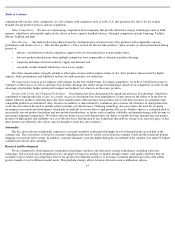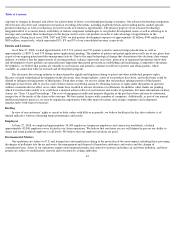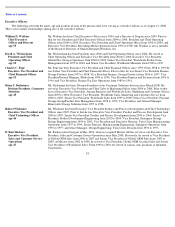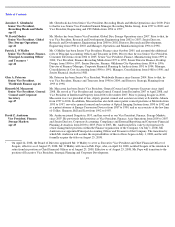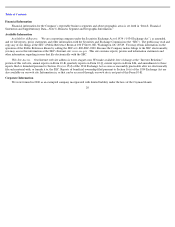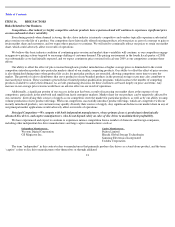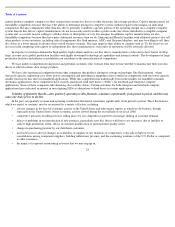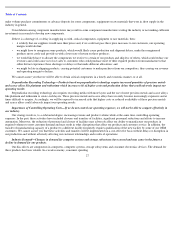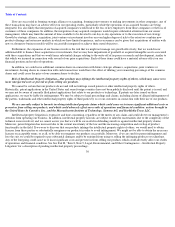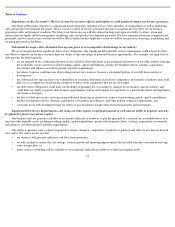Seagate 2007 Annual Report Download - page 23
Download and view the complete annual report
Please find page 23 of the 2007 Seagate annual report below. You can navigate through the pages in the report by either clicking on the pages listed below, or by using the keyword search tool below to find specific information within the annual report.
Table of Contents
entities produce complete computer or other systems that contain disc drives or other electronic data storage products. Captive manufacturers are
formidable competitors because they have the ability to determine pricing for complete systems without regard to the margins on individual
components. Because components other than disc drives generally contribute a greater portion of the operating margin on a complete computer
system than do disc drives, captive manufacturers do not necessarily need to realize a profit on the disc drives included in a complete computer
system and, as a result, may be willing to sell disc drives to third parties at very low margins. In addition, captive manufacturers are also
formidable competitors because they have more substantial resources than we do. Samsung and Hitachi (together with affiliated entities) also sell
other products to our customers, including critical components like flash memory, ASICs and flat panel displays, and may be willing to sell their
disc drives at a lower margin to advance their overall business strategy. This may improve their ability to compete with us. To the extent we are
not successful competing with captive or independent disc drive manufacturers, our results of operations will be adversely affected.
In response to customer demand for high-quality, high-volume and low-cost disc drives, manufacturers of disc drives have had to develop
large, in some cases global, production facilities with highly developed technological capabilities and internal controls. The development of large
production facilities and industry consolidation can contribute to the intensification of competition.
We face indirect competition from present and potential customers who evaluate from time to time whether to manufacture their own disc
drives or other electronic data storage products.
We have also experienced competition from other companies that produce alternative storage technologies like flash memory, where
increased capacity, improving cost, lower power consumption and performance ruggedness have resulted in competition with our lower capacity,
smaller form factor disc drives in handheld applications. While this competition has traditionally been in the markets for handheld consumer
electronics applications, these competitors have recently announced solid state drives (“SSDs”) for notebook and enterprise compute
applications. Some of these companies, like Samsung, also sell disc drives. Certain customers for both enterprise and notebook compute
applications have indicated an interest in investigating SSDs as alternatives to hard drives in certain applications.
Volatility of Quarterly Results—Our quarterly operating results fluctuate, sometimes significantly, from period to period, and this may
cause our share prices to decline.
In the past, our quarterly revenue and operating results have fluctuated, sometimes significantly, from period to period. These fluctuations,
which we expect to continue, may be occasioned by a variety of factors, including:
•
adverse changes in the level of economic activity in the United States and other major regions in which we do business, though
especially in the United States, where economic activity slowed during the second half of our fiscal 2008;
•
competitive pressures resulting in lower selling prices by our competitors targeted to encourage shifting of customer demand;
•
delays or problems in our introduction of new products, particularly new disc drives with lower cost structures, due to inability to
achieve high production yields, delays in customer qualification or initial product quality issues;
•
changes in purchasing patterns by our distributor customers;
•
increased costs or adverse changes in availability of supplies of raw materials or components, especially in light of recent
consolidation among component suppliers, building inflationary pressure, and the continuing weakness of the U.S. Dollar as compared
to other currencies;
22
•
the impact of corporate restructuring activities that we may engage in;


